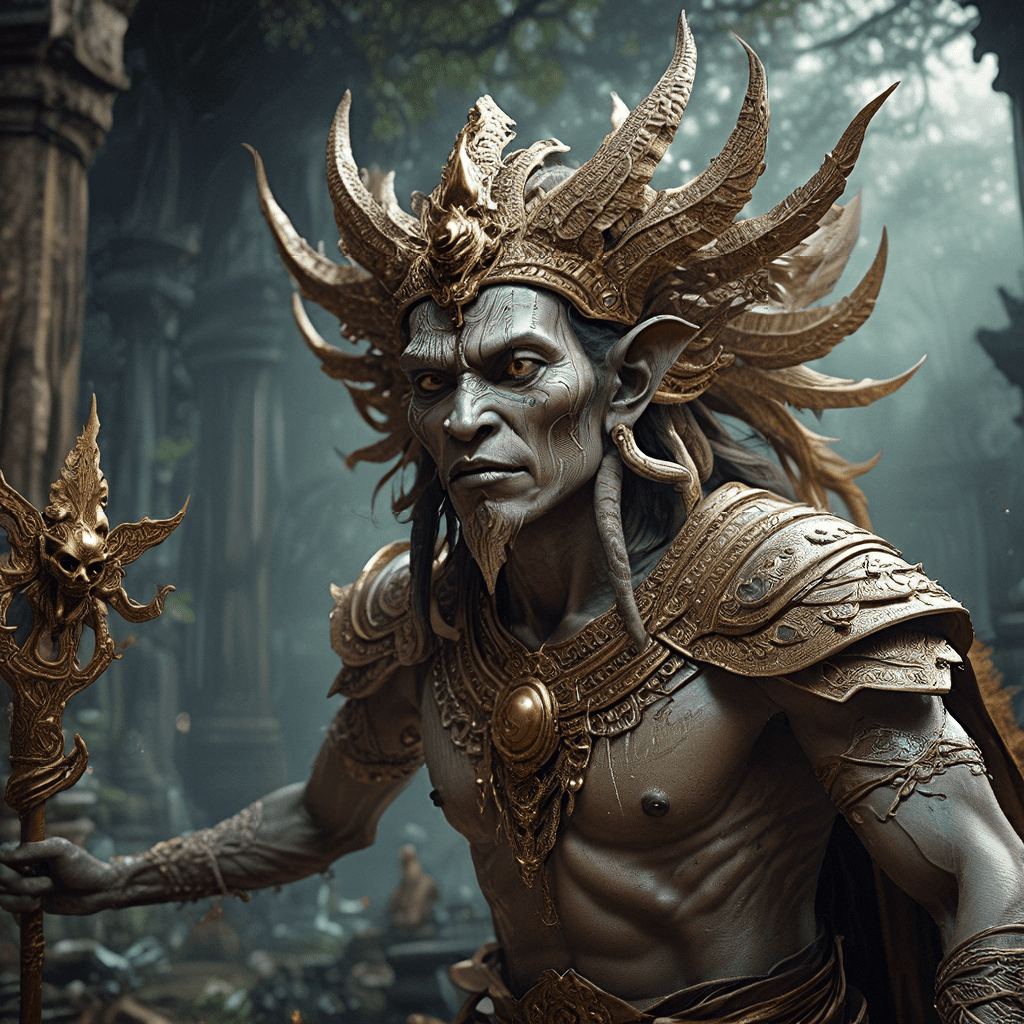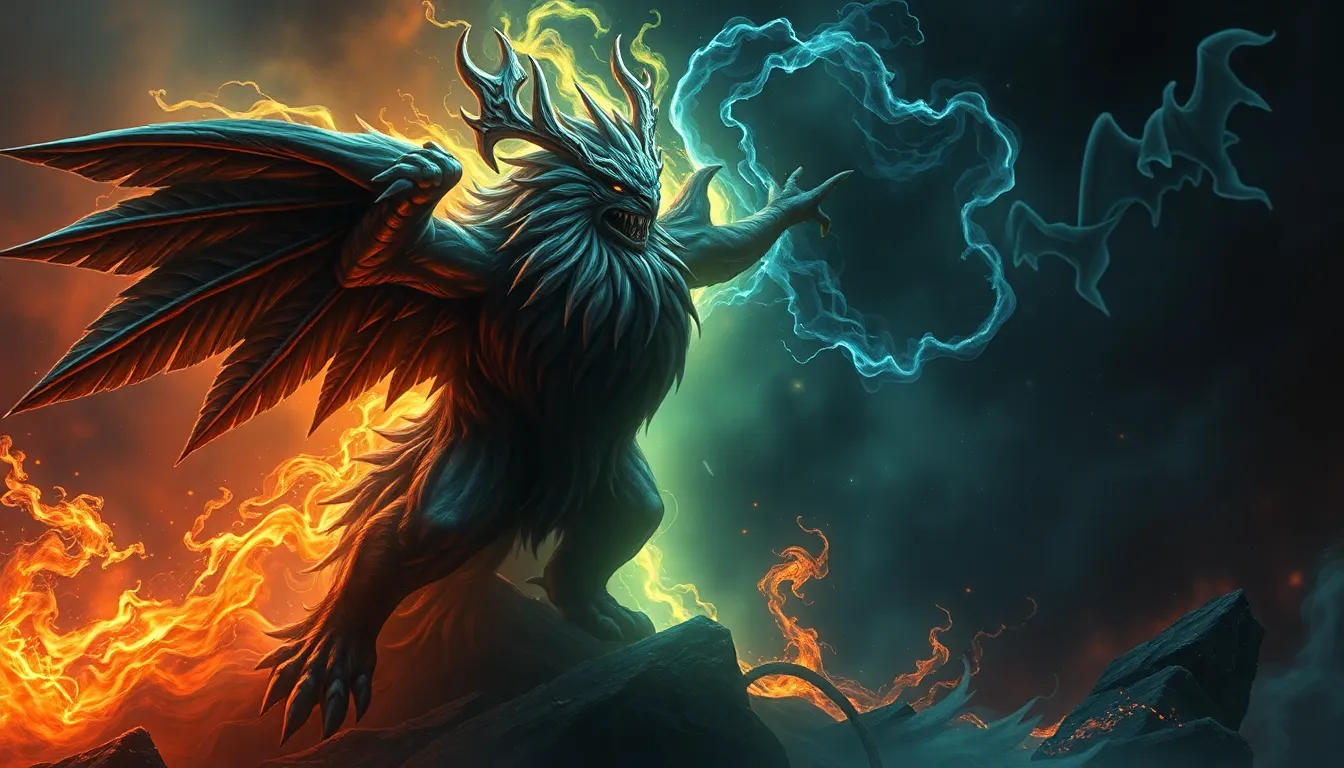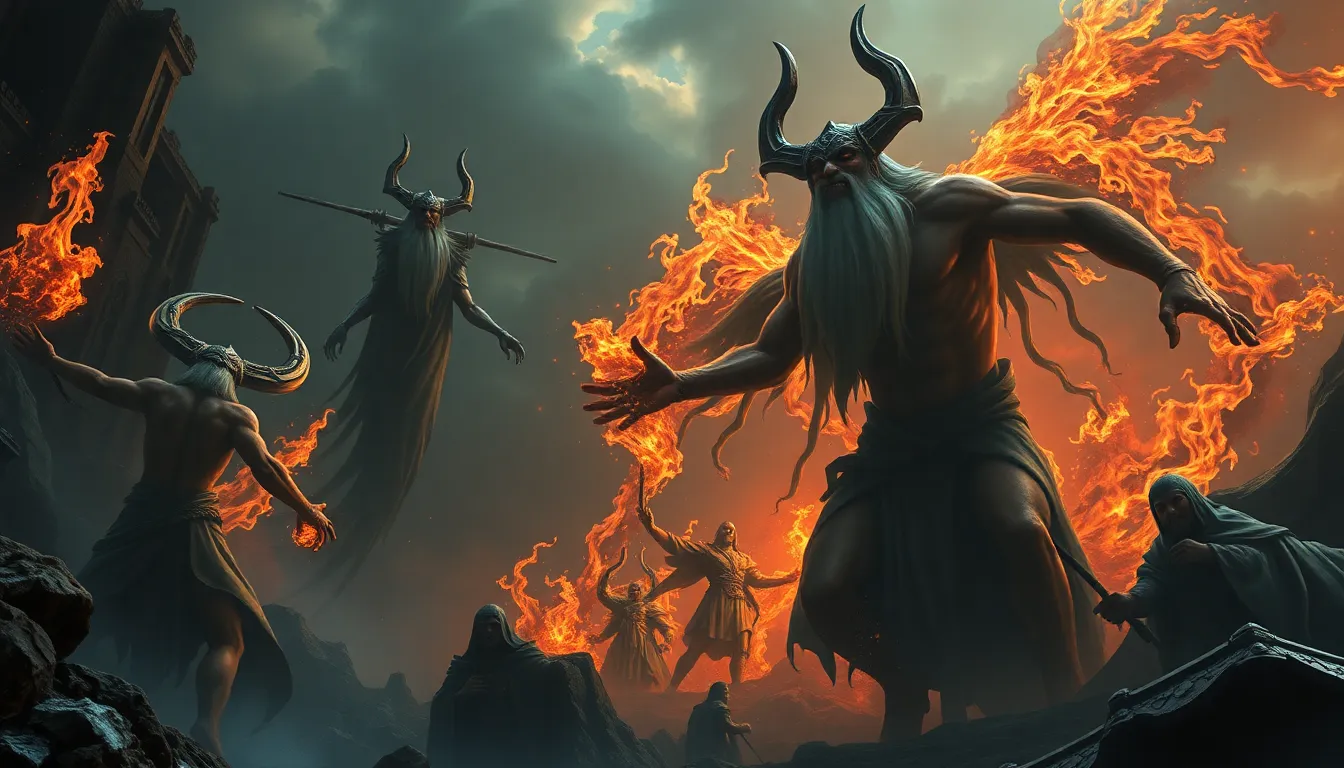Indonesian Mythology: Ghosts, Demons, and Supernatural Creatures
1. Introduction: A Tapestry of Supernatural Beings
Indonesia, a nation of vibrant culture and diverse traditions, is also home to a rich tapestry of supernatural beings. From mischievous spirits to terrifying demons, these creatures have permeated Indonesian folklore for centuries, shaping beliefs, customs, and even everyday life. This exploration delves into the fascinating world of Indonesian mythology, examining the various supernatural beings that inhabit its myths and legends.
2. The Realm of the Spirits: Exploring the Indonesian Belief System
Indonesia's supernatural landscape is deeply intertwined with its belief system, which acknowledges the existence of a spiritual realm alongside the physical world. This belief system, often described as animistic, recognizes spirits and supernatural beings as integral parts of the universe. These beings are believed to possess power that can influence human lives, both positively and negatively. Indonesians have developed various rituals and practices to appease, communicate with, and, in some cases, ward off these spirits.
3. Hantu: The Ghosts of Indonesia – A Spectrum of Fears
The term "hantu" encompasses a wide range of ghosts in Indonesian mythology, each with its own unique characteristics and stories. Some are vengeful spirits seeking retribution, while others are lost souls yearning for peace. The "kuntilanak," a female ghost often depicted with long hair and a white dress, is infamous for its eerie laughter and haunting appearance. The "pocong," a ghost wrapped in a white shroud, is said to be a malevolent spirit that wanders the streets seeking victims. These are just a few examples of the numerous hantu that populate Indonesian folklore, contributing to the country's rich and diverse mythology.
4. Setan: The Demons of Indonesia – Agents of Chaos and Misfortune
"Setan" are demonic entities believed to be malevolent and destructive forces in Indonesian mythology. These powerful beings are often associated with evil intentions, misfortune, and temptation. One prominent setan is the "Iblis," a powerful and cunning demon known for tempting humans to stray from the path of righteousness. Other setan, like the "Jinn" and "Peri," are described as possessing supernatural abilities and the capacity to influence human affairs, often to their detriment. The fear of setan has deeply ingrained itself in Indonesian culture, influencing moral codes, rituals, and daily life.
5. Jin and Peri: Beings from the Unseen World – Guardians and Tricksters
Jin and Peri are two prominent types of supernatural beings in Indonesian mythology, belonging to the broader category of supernatural creatures existing in the unseen world. "Jin" are often described as mischievous beings, capable of both good and evil. They are believed to be made of fire and can inhabit various environments, including the air, water, and earth. "Peri," on the other hand, are more often associated with beauty, magic, and, sometimes, trickery. They are often depicted as ethereal beings with the ability to shape-shift and manipulate the natural world. Both Jin and Peri play significant roles in Indonesian folklore, embodying the complex relationship between humans and the supernatural realm.
6. Mythology and Folklore: Shaping the Supernatural Landscape
Indonesian mythology and folklore are the living repositories of these supernatural beings. Each region and island boasts unique stories, tales, and legends that breathe life into these creatures, granting them specific characteristics, motivations, and roles in the human world. These stories are often passed down through generations, becoming ingrained in the collective consciousness of Indonesian society. These myths offer insight into the values, fears, and aspirations of the people who created them, providing a glimpse into the complex relationship between humans and the supernatural.
Examples of Supernatural Beings in Indonesian Folklore:
- The “Wewe Gombel” (Spirit who Kidnaps Children): This female spirit is known for her fearsome appearance and habit of luring children away from their homes, often to her hidden lair.
- The “Tuyul” ( mischievous spirit): This small, mischievous spirit, often depicted as a child, is notorious for its abilities to steal money and valuables.
- The “Naga” (Dragon-like creature): A mythical being, sometimes depicted as a serpent with wings, the Naga is often associated with water and is known for its magical powers.
- The “Putri Duyung” (Mermaid): This beautiful creature, with the upper body of a woman and the lower body of a fish, is found in various myths and legends.
These are just a handful of the many supernatural beings that inhabit Indonesian folklore. Each story, with its unique characters and plot, offers a fascinating window into the beliefs and cultural practices of the Indonesian people.
7. The Influence of Religion: Islam and the Supernatural World
Indonesia is predominantly Muslim, and the introduction of Islam has profoundly influenced the understanding of the supernatural world. Islam, with its own belief system and scriptures, has blended with existing Indonesian traditions, shaping the interpretation of supernatural beings.
The Influence of Islam:
- Assimilation and Adaptation: Many Indonesian supernatural beings have been assimilated into Islamic belief systems, often being labeled as jin or setan.
- Emphasis on Monotheism: Islam promotes monotheism, emphasizing the belief in one God, which has impacted the way Indonesians perceive the supernatural.
- Moral Codes: Islamic teachings have shaped moral codes and practices, influencing the perception of good and evil and their connection to the supernatural world.
The integration of Islam has created a complex tapestry of beliefs, where ancient traditions intertwine with Islamic doctrines, resulting in a unique and diverse approach to the supernatural.
8. Spiritual Practices and Rituals: Connecting with the Unseen
The belief in supernatural beings has led to the development of various spiritual practices and rituals aimed at connecting with, appeasing, or warding off these entities. These practices vary across regions and communities, reflecting the diversity of Indonesian culture and beliefs.
Common Rituals:
- "Selamatan" (Ceremony): These ceremonies involve offerings of food and prayers to appease spirits and request their blessings.
- “Ruwat” (Ritual to ward off evil): This involves special ceremonies to cleanse individuals and communities from bad influences and protect them from negative spirits.
- “Jampi” (Incantations): These chants or incantations are used to appease, control, or ward off supernatural beings.
These practices demonstrate the deep reverence and interaction Indonesians have with the spiritual world. Many of these rituals are passed down through generations, playing an essential role in maintaining a harmony between the physical and spiritual realm.
9. Supernatural Encounters in Modern Indonesia: Belief and Skepticism
In modern Indonesia, beliefs in supernatural beings continue to persist, although attitudes vary. While some individuals remain staunch believers, many adopt a more skeptical approach. The influence of modern education, science, and media contributes to a growing skepticism towards traditional beliefs. However, the presence of these beliefs continues to influence daily life, shaping customs, traditions, and social interactions.
Contemporary Encounters:
- Stories of Paranormal Activity: Tales of supernatural encounters continue to be shared across generations, reinforcing the belief in these entities.
- Spiritual Practitioners: Individuals who claim to have spiritual abilities, such as mediums and shamans, still play an important role in some communities, offering spiritual guidance and support.
- The Impact of Media and Pop Culture: The portrayal of supernatural beings in popular media, including movies, TV shows, and literature, often influences public perception and interest in the subject.
The intersection of tradition, modernity, and popular culture creates a unique landscape in contemporary Indonesia, where beliefs in the supernatural coexist with a growing awareness of scientific explanations.
10. Conclusion: A Legacy of the Supernatural – Indonesian Mythology and its Enduring Influence
The rich tapestry of supernatural beings in Indonesian mythology continues to influence the cultural fabric of the nation. From folklore to spiritual practices, these creatures have shaped beliefs, customs, and social interactions for centuries. While the modern world presents alternative perspectives, the enduring legacy of these myths and the belief in the unseen realm remains a vital part of Indonesian heritage. The fascinating world of Indonesian mythology, with its diverse array of spirits, demons, and supernatural creatures, offers a captivating glimpse into the beliefs and values of this unique and vibrant culture.
FAQ
Q: What are the most common supernatural beings in Indonesian mythology?
A: Some of the most common supernatural beings in Indonesian mythology include the "hantu" (ghosts), "setan" (demons), "jin" (spirits), and "peri" (fairies).
Q: Are these supernatural beings always malevolent?
A: No, not all supernatural beings in Indonesian mythology are malevolent. Some, like "peri," are associated with beauty and magic, while "jin" can be both benevolent and mischievous depending on their nature.
Q: How has Islam influenced the understanding of supernatural beings in Indonesia?
A: Islam has influenced the understanding of supernatural beings in Indonesia by assimilating many traditional beings into Islamic categories, like "jin" and "setan." It has also emphasized monotheism and shaped moral codes, impacting the perception of good and evil in relation to the supernatural.
Q: Are beliefs in supernatural beings declining in modern Indonesia?
A: While modern influences like education and science might lead to a more skeptical approach in some individuals, beliefs in the supernatural still persist in modern Indonesia. Many people continue to hold these beliefs and engage in spiritual practices related to the supernatural world.
Q: What is the best way to learn more about Indonesian mythology?
A: There are many ways to learn more about Indonesian mythology. You can read books, articles, and online resources on the subject. Visiting museums, attending cultural events, and speaking with people who are knowledgeable about traditional beliefs can also be helpful.



